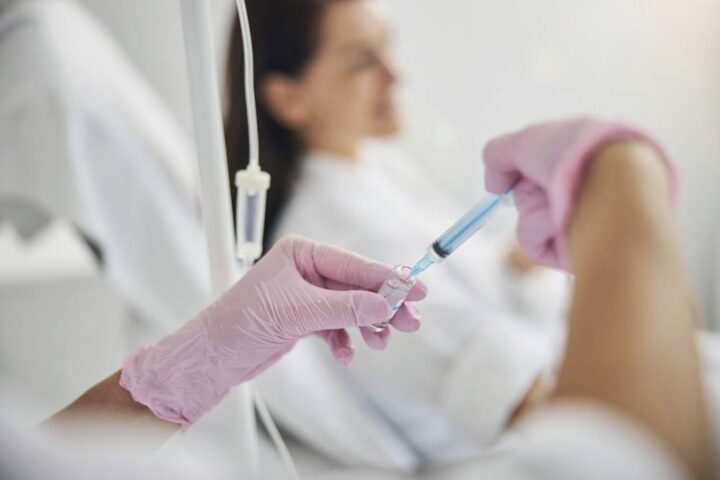Not Exclusive to Hospitals: IV Therapy as a Wellness Trend
Intravenous therapy, also known as IC therapy, has been a form of medical treatment, for approximately 100 years. The utilization of vascular access to administer essential medications and vitamins to patients during hospitalizations has undoubtedly contributed to saving lives over the years.
However, there has been a shift in the perception of IV therapy in recent years, transforming it from a standard medical procedure into a popular wellness trend. IV bars and drip bars are emerging as lucrative enterprises for those aiming to capitalize on the wellness movement.
So what exactly does the process involved and how can it be beneficial for you?
What Is IV Therapy?

IV therapy delivers a concentrated dose of vitamins and minerals directly into the bloodstream. Unlike the typical absorption process, which is gradual, this method enables the body to quickly assimilate nutrients in larger quantities.
In recent decades, vitamin IV therapy has been advocated as a remedy for various medical conditions. Supporters of IV therapy claim that it can treat:
? Withdrawal
? Diabetes
? Fatigue
? Asthma
? Fibromyalgia
? Dehydration
What Is Used In A Typical IV Therapy Session?
The most popular form of IV therapy is called the Myers’ cocktail. It is a blend of intravenous fluids, including vitamins and electrolytes, popularized by the physician, Dr. John Myers. He developed this formulation back in the 1960s to assist certain patients suffering from various health conditions.
Since its inception, Myers’ cocktail has undergone extensive research and refinement, with assertions that it may address a diverse range of ailments, including migraines, fatigue, allergies, and more.
Additionally, other intravenous infusions purport to provide vitamin replenishment, rehydration, and detoxification for patients.
The cocktail typically includes:
? 1 mL of vitamin B12
? 2 to 5 mL of magnesium
? 1 mL of vitamin B complex
? 1 mL of vitamin B6
? 1 to 3 mL of calcium
? 1 mL of vitamin B5
? 4 to 20 mL of Vitamin C
What Are The Benefits Of IV Therapy?
One advantage of vitamin IV therapy is that it provides the body with essential hydration through the fluids administered. This hydration is thought to significantly contribute to the improved well-being experienced by individuals following the treatment.
Additionally, vitamin IV therapy serves as an effective method for supplementing vitamins in individuals with digestive complications that hinder their ability to absorb nutrients from food adequately.
Are There Risks to IV Therapy?
Although it sounds like a harmless treatment plan, it does come with some risks. One of the biggest risks is that it bypasses all of your body’s gatekeeping functions. Your bloodstream is then flooded with all of these vitamins at once instead of the stomach digesting and processing them slowly. That makes it very easy for vitamin toxicity to take place.
Another risk is that most people seek out IV therapy without first consulting their doctors. They believe that if they’re getting these vitamins anyway, what’s wrong with getting them in a more “effective” manner?
Without knowing the patient’s lab values, medical conditions, and current medications and supplements, therapists may inadvertently surpass the advised daily limits of vitamins and nutrients, and risk the patient’s health. As a result, the kidneys will have to work overtime to eliminate any excess vitamins and minerals that the body no longer needs.
Another risk is that the frequent use of intravenous (IV) treatment may lead to nutritional imbalances.
For example, IV therapy can disrupt electrolyte levels, and an excess of potassium may lead to life-threatening arrhythmias. Additionally, overhydration poses another risk associated with excessive treatment frequency, which can cause symptoms such as nausea, headaches, and confusion.
Other risks include:
? Skin burns
? Phlebitis
? Medication dosing errors
? Necrosis
? Infections
? Amputation
? Compartment syndrome
? Permanent nerve damage
How Much Does IV Therapy Typically Cost?
The cost of IV therapy can differ greatly based on the location of the treatment and the specific components included in the infusion. Regrettably, the majority of insurance providers do not cover vitamin IV therapy expenses, which can lead to significant costs if you opt for weekly or biweekly sessions.
As an alternative, maintaining a balanced diet, taking vitamin supplements, and using sports drinks for hydration may prove to be more economical and beneficial for your health. However, if you suffer from a gastrointestinal condition that hinders nutrient absorption, it is advisable to consult your physician to determine whether vitamin IV therapy is an appropriate option for your situation.
What Is A Drip Bar?
Drip bars provide a service where customers can visit and receive a blend of vitamins and nutrients administered intravenously. However, one must consider the cost. Prices at these establishments can exceed $200 for a single treatment, varying from one drip bar to another.
Typically, these facilities employ trained medical professionals, ensuring that the procedures are conducted by individuals skilled in the use of IV needles.
Nevertheless, the potential for IV infiltration exists. Although there is a lack of specific studies on IV infiltrations in drip bars, it is known that approximately 50% of IVs administered in hospital settings may fail.
Criticisms Of Drip Bars
When it comes to most health and wellness trends, it’s important to exercise a certain amount of skepticism and criticism. While intravenous (IV) therapy is generally accepted due to its established medical applications and extensive research, the trend of utilizing IV therapy for general wellness has faced scrutiny.
Critics argue that this trend primarily serves as a profit-driven enterprise. Medical professionals advise individuals to refrain from seeking IV treatments unless specifically recommended by a healthcare professional, stating that some services are much more about making money than delivering a product that’s good for your health. It can lead to a false sense of security that people are being more healthy when they’re really not.
Research on IV therapy should be taken with a grain of salt, and it’s not for everyone. But that doesn’t mean that you should rule it out completely. Speak with your doctor beforehand to see if IV therapy might be right for you and your lifestyle, and whether you stand to benefit from it at all.


